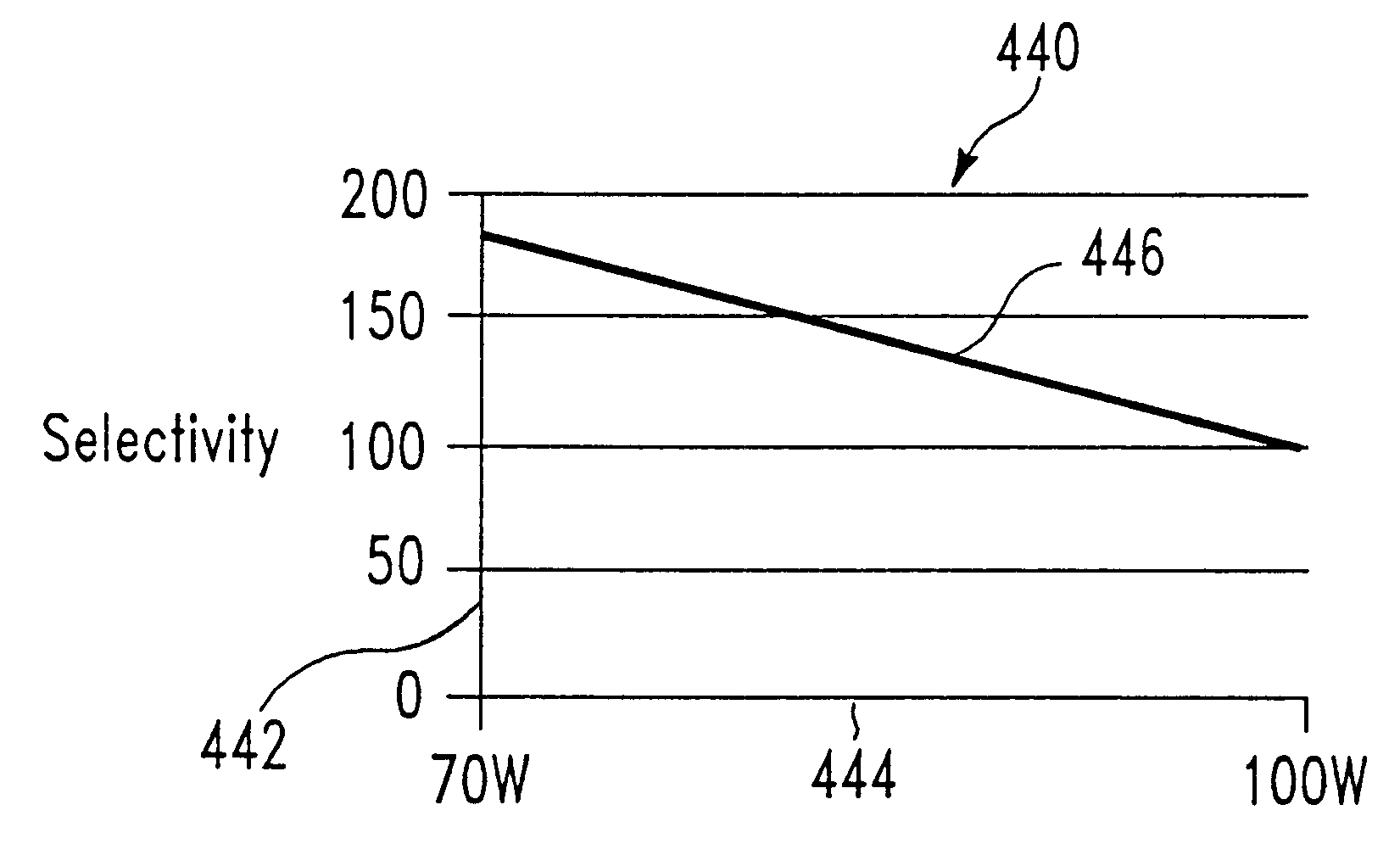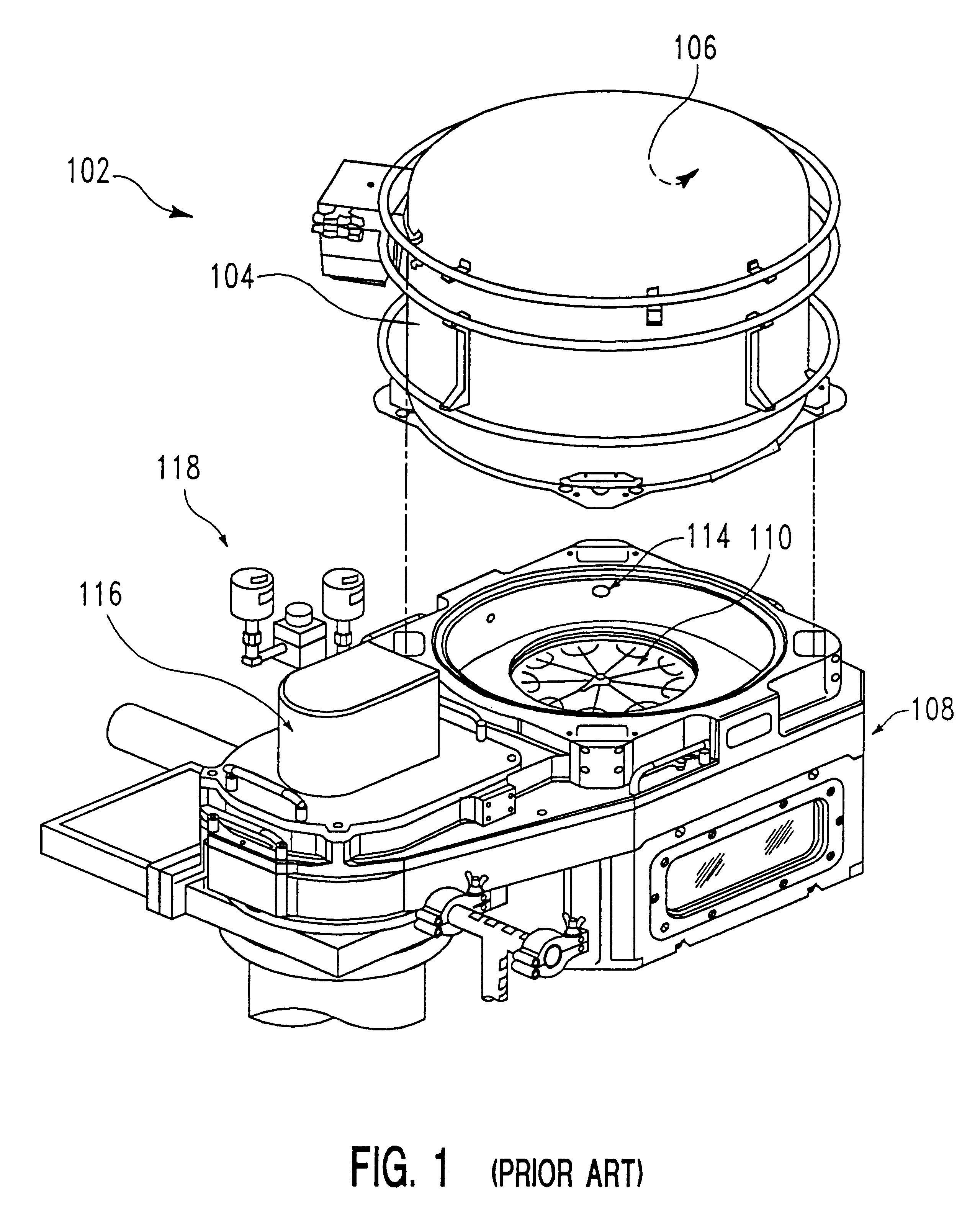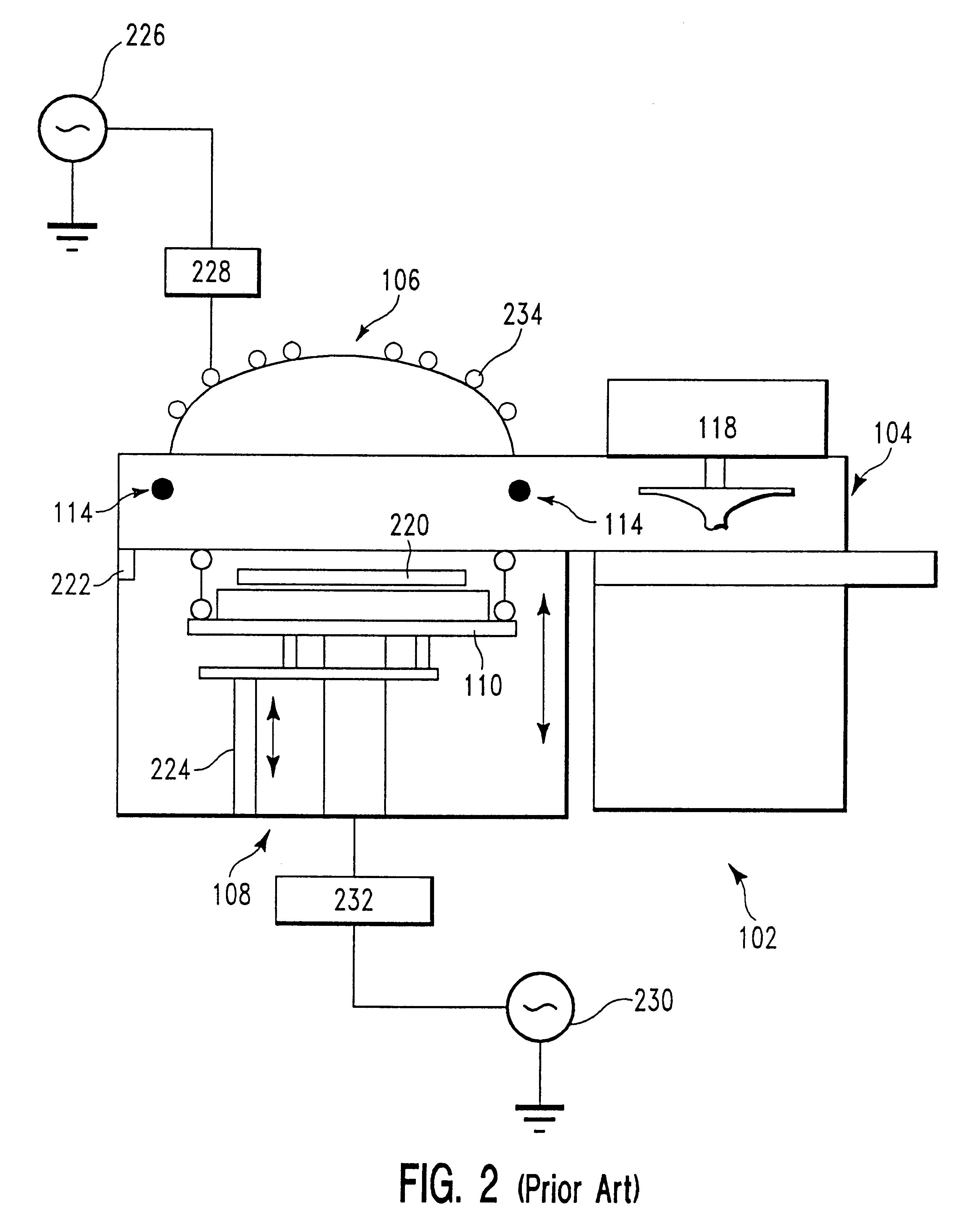Metal mask etching of silicon
a metal mask and etching technology, applied in the direction of vacuum evaporation coating, transistors, coatings, etc., can solve the problems of insufficient micromachining applications, insufficient deep trench capacitor fabrication, insufficient deep trench isolation, etc., and the sidewall profile of the trench is difficult to control
- Summary
- Abstract
- Description
- Claims
- Application Information
AI Technical Summary
Benefits of technology
Problems solved by technology
Method used
Image
Examples
example two
In this Example, 5 experiments were conducted. The film substrate etched was similar to that described with reference to EXAMPLE ONE in terms of the width of the lines and spaces between the lines. However, the line structure was different, as is illustrated in FIG. 4A. The film structure 400 included a line 401 resting on the upper surface 403 of single crystal silicon substrate 402. Line 401 had an overall thickness 404 of 5.34 .mu.m, including: a 4,000 .ANG. thick layer of TEOS 404 in direct contact with upper surface 403; a 1,400 .ANG. thick layer of Si.sub.3 N.sub.4 406 overlying the TEOS layer 404; a 40,000 .ANG. (4.0 .mu.m) thick masking layer 408 of Al--Cu overlying the Si.sub.3 N.sub.4 layer 406; and a second, 8,000 .ANG. thick TEOS layer 410 overlying the Al--Cu masking layer 408.
A pre-clean plasma etch step is optional prior to the etch step described in Table II below. When it is used, it is for purposes of removing debris (such as native oxide) from the portion of the s...
PUM
| Property | Measurement | Unit |
|---|---|---|
| Percent by mass | aaaaa | aaaaa |
| Percent by mass | aaaaa | aaaaa |
| Pressure | aaaaa | aaaaa |
Abstract
Description
Claims
Application Information
 Login to View More
Login to View More - R&D
- Intellectual Property
- Life Sciences
- Materials
- Tech Scout
- Unparalleled Data Quality
- Higher Quality Content
- 60% Fewer Hallucinations
Browse by: Latest US Patents, China's latest patents, Technical Efficacy Thesaurus, Application Domain, Technology Topic, Popular Technical Reports.
© 2025 PatSnap. All rights reserved.Legal|Privacy policy|Modern Slavery Act Transparency Statement|Sitemap|About US| Contact US: help@patsnap.com



